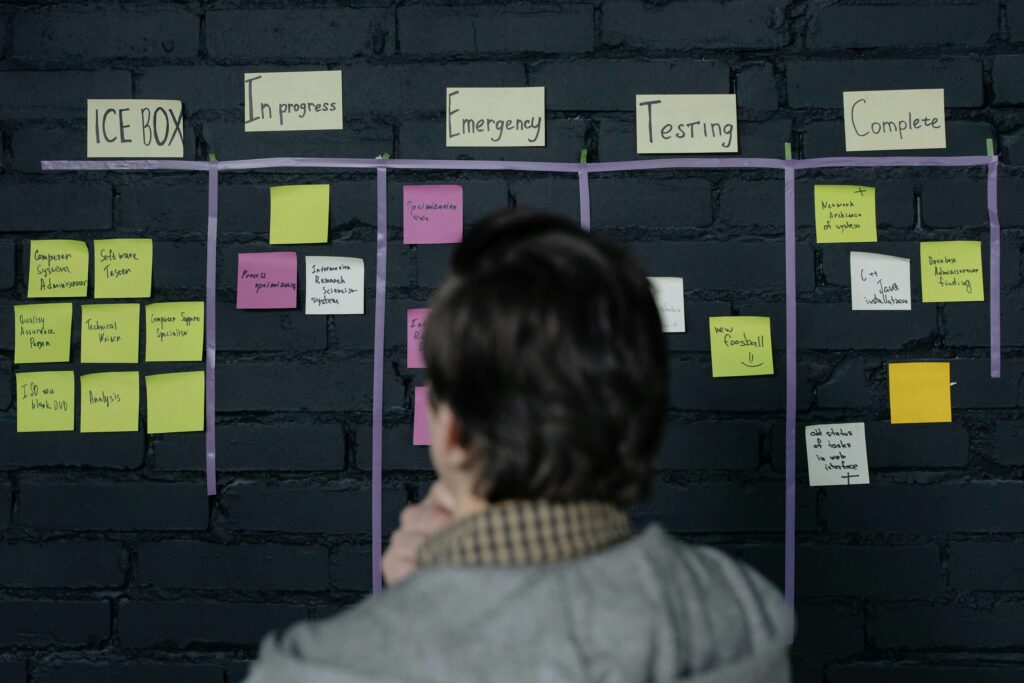By Amanda Winstead

When a project veers off course, it’s rarely because people aren’t working hard. It usually comes down to team members misunderstanding expectations, unclear priorities, or misaligned communication. Getting everyone on the same page and keeping them there is key to delivering strong results without delays or confusion. But piling on extra layers of structure can bog down progress and frustrate your team.
The goal is to create clarity without adding clutter. Collaboration becomes easier and more productive when communication is open and everyone understands how their role fits into the bigger picture.
Here’s how to improve team alignment without letting your project plan spiral into complexity.
Streamline Communication to Foster Alignment
Keeping everyone aligned starts with how you communicate daily. Regular team check-ins, whether daily standups or weekly syncs, create a steady rhythm for updates and allow space to resolve issues before they escalate. These meetings should clarify responsibilities, not turn into status-report marathons.
It also helps to use collaboration tools that make it easy to track conversations, project progress, and ownership. A shared workspace keeps everyone focused on the same goals and minimizes the chances of miscommunication or missed deadlines.
One of the most overlooked but essential alignment elements is how you communicate between departments. Effective interdepartmental communication means bridging priorities and creating shared context so teams aren’t operating in silos. Transparency builds trust, and trust leads to better decisions.
Encourage honest feedback and act on it quickly. When people see their concerns lead to changes, they become more engaged, and that creates momentum that’s hard to beat.
Keep Workflow Structure Supportive, Not Burdensome
There’s a fine line between helpful structure and workflow overload. Too many processes can slow your team down and make every task like a box-checking exercise. That rigidity chips away at motivation and leaves less room for critical thinking.
Instead of mapping every step in detail, focus on defining outcomes. Set clear milestones and let your team decide how best to reach them. This approach fosters autonomy while keeping the project aligned with overall goals.
It’s also worth recognizing how complex workflows affect employee well-being and productivity. When systems are too rigid or over-managed, burnout sets in fast. People feel like cogs in a machine rather than contributors to something meaningful. To prevent that, design workflows that support employee well-being, guiding your team without micromanaging. Think of structure as a safety net, not a cage.
When your team feels supported but not stifled, they’re more likely to take initiative and stay fully engaged from start to finish.
Recognize and Combat Cognitive Biases
Unconscious thinking patterns can wreak havoc in collaboration, even when intentions are good. Information bias is a common culprit. It happens when teams rely too heavily on familiar data, even when it’s irrelevant or incomplete, simply because it’s easier to access or interpret.
This kind of bias can skew decisions and cause significant misalignment later on. The key is to stay alert and encourage your team to ask the hard questions: What are we missing? What assumptions are we making? What evidence supports this path forward?
Understanding how information bias interferes with objective project planning can help prevent costly missteps. Teaching your team to recognize it is half the battle. From there, create a culture that rewards fact-based discussion, not just consensus. Make sure all voices are heard, especially those raising uncomfortable truths.
That openness leads to stronger, more thoughtful planning. When your team has permission to challenge the status quo, they help create alignment, not just something they’re expected to follow.
Utilize Tools to Track and Adjust as Needed
When timelines shift or priorities evolve, it’s essential to pivot quickly while staying coordinated. Real-time tracking tools make keeping up with moving parts, such as deadlines, deliverables, or workloads, easier.
But tools alone won’t align your project, so you need a mindset that welcomes change instead of resisting it. Adaptive planning lets you adjust without abandoning the whole plan so that you can stay organized and flexible at the same time.
One of the most effective ways to do this is to set up agile workflows for data management that support incremental progress and team input. Agile methods focus on staying responsive to feedback and adapting to changes as the project evolves.
Visual planning tools also help bring clarity to the team. When everyone can see what’s coming next and where things stand, you cut down on confusion and eliminate guesswork. Clear visuals can be the bridge between a great strategy and smooth execution.
Conclusion
Team alignment doesn’t require a complete overhaul of your project management approach. You just need to make a few smart adjustments. Commit to consistent communication, encourage interdepartmental transparency, and give your team room to own their responsibilities.
Avoid drowning in overly structured workflows. Instead, focus on what outcomes matter and how to best support your team in reaching them. Think long-term by considering how structure affects well-being, and build an environment where everyone feels capable and trusted.
The focus is on staying in sync and making steady progress with clear intent. When you focus on alignment with the right mindset and approach, success becomes much easier to sustain.

 Bantter Blog
Bantter Blog